Patterns on Bark and Stone (Lichens)
Winter and early spring (when little else is moving) is a good time to sharpen up your photographic skills on Lichens. Most species are at their best at this time when the trees are devoid of leaves letting more light into the woodlands making them much easier to photograph. Many species have a colourful vibrancy to them at this time of the year, particularly after light rain. These remarkable organisms are the result of a successful partnership between a fungus, and an alga, or a cyanobacterium, or both existing together in a symbiotic relationship. The fungus provides the structure or the thallus as it is known and the alga or cyanobacterium through photosynthesis provides the essential nutrients. This is a highly successful partnership that stems back millions of years.

Parmelina pastillifera & Flavoparmelia caperata
Found these species growing on varius trees in the centre of Killarney main street. Obviously not that affected with the pollution from vehicles.
Many lichens are also sensitive to pollution and therefore act as an important monitor in terms of the health of our environment. They grow in some of the most unlikely places – I have even found and photographed species growing on the bones of human remains inside old dilapidated tomb’s. The larger eye-catching species form patchworks of colour on rocks and decorate the trunks and branches of trees and gravestones.
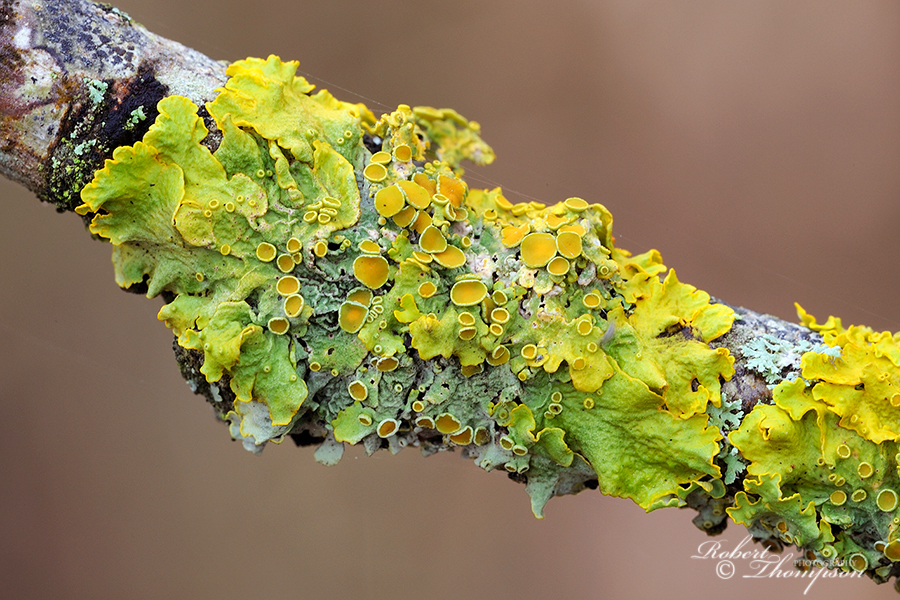
Xanthoria parietina
Don’t neglect fallen branches they often have different species growing on them as in this case.

Scarce Merveille du Jour Moma alpium
Some moths when at rest blend naturally with the lichens found on tree trunks; this is an excellent example of cryptic camouflage.
Lichens also have many other applications and are used in medicines, perfumes and as dyes to colour wool and other fabrics. They are also a food source for many insects including the larvae of some moths. Snails and slugs adore them and they are also an important food for certain species of deer. There are over 1700 species of lichen described in the British Isles and probably many more awaiting identification and discovery.
Ideal habitats
Most people probably come into contact with lichens on the coast growing on various rock structures. This an excellent place to begin your explorations. There are many species to be found on the coast, the vibrant orange and yellow colours of the Xanthoria’s are some of the most common species seen on rocks along the shoreline.
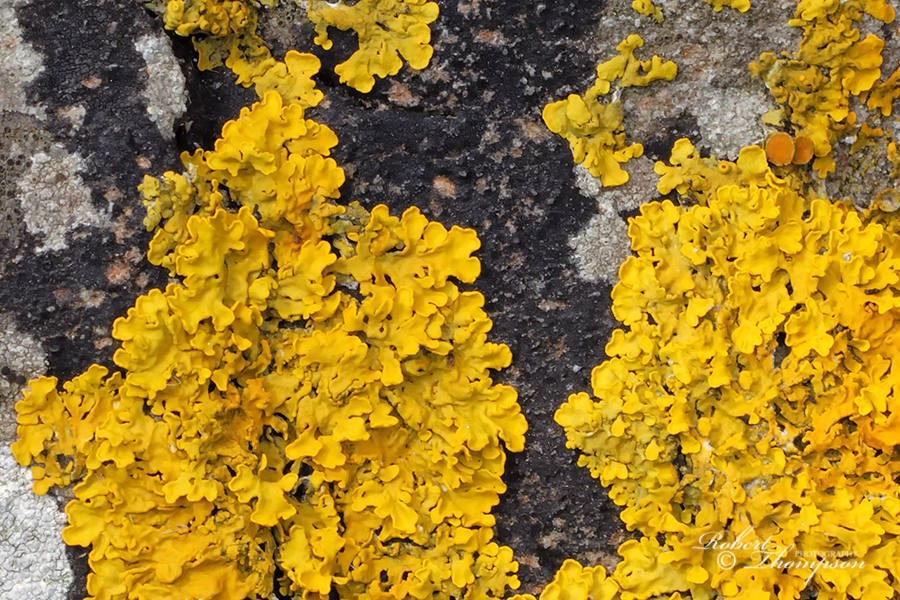
Xanthoria aureola
A bright vibrant yellow species often see in profusion on rocks along the shoreline.
Woodlands also support a large number of species, but a little more diligent searching of the trunks and branches of trees is needed to find some of the more interesting ones. Some lichens form patterns and mosaics on certain trees such as Holly and Hazel creating opportunities for various abstracts.

Lobaria virens
A large foliose species associated of old woodland habitats. Confined in Ireland to western sites. The apothecia are often abundant with emerging brown discs.
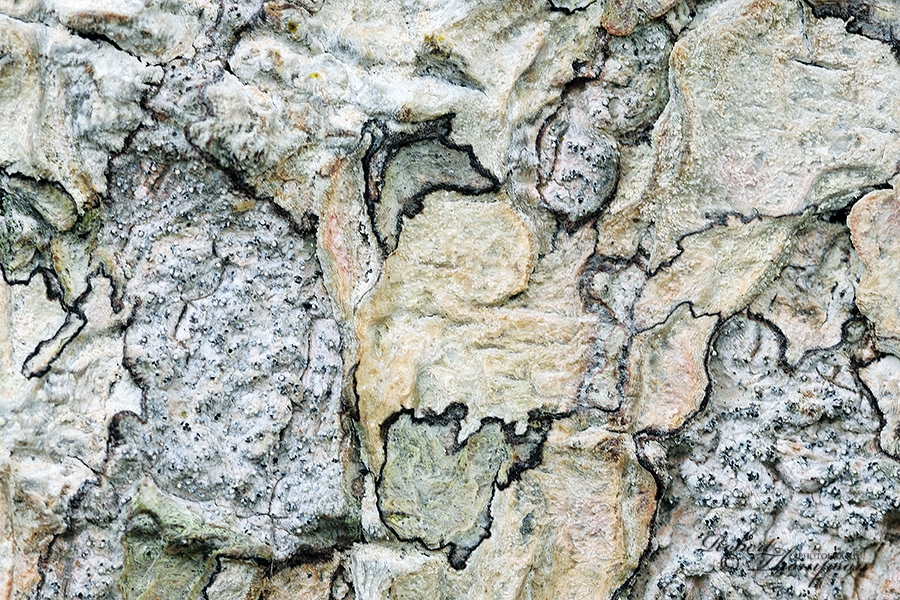
Schismatomma niveum
Heaths and bogs are also worth exploring and are noted for the Cladonia species, which resemble redheaded matches and deer’s antlers. Cladonia portentosa also known as one of the reindeer lichens is frequently found heaths moorland and on the surface of peat bogs and mature acidic dune slacks. It’s an attractive species and particularly photogenic.

Cladonia portentosa
A distinctive species often seem in perfusion scattered across heaths and bogs.
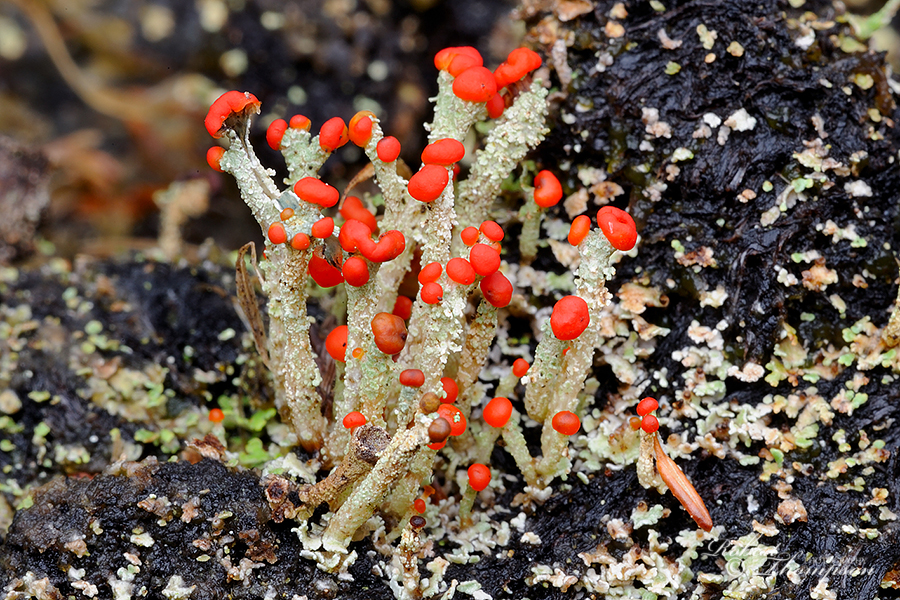
Cladonia floerkeana
One of a number of Cladonia species found in healths and bogs. The conspicuous red apothecia make it easy to spot on peat banks and old decaying stumps.
Old churchyards are also excellent habitats for crustose species –these are lichens that spread and embed themselves into the rock and cannot be removed from the surface. Many thrive on the various types of gravestones and monuments forming patterns. The most productive are those, which are very old and have been neglected for many years. If you visit a graveyard pick a day with no rain as many of the species that inhabit rock are better photographed in dry conditions. Upland mountainous areas, which are also good for many rock dwelling species, and are well worth the trouble to explore during the winter months on a mild bight day.

Ochrolechia parella Tephromela atra var. atra & Pertusaria pertusa
Old neglected graveyards are the most productive sites for lichens. Many species are to be found growing on the boundary walls, and on the various gravestones.

Ochrolechia parella & Tephromela atra var. atra
Two species found frequently on old decaying gravestones. The former is one of the most commonly recorded species from neglected graveyards.
Photographic approach
Believe it or not, photographing lichens can be a frustrating business; I often find the most interesting specimens grow in extremely awkward places. There are times when I have had to climb up steps to reach specimens on branches or lie flat on my chest in bogs. I have devised all sorts’ of devices that make the process easier, especially with smaller species. Vibration is a big problem at higher magnifications, even when using a focusing rail as the terrain is not always that stable.

Lecanora pulicaris & Fuscidea lightfootii
Solid support from a tripod is necessary if you want to select your focus point and resolve the finest detail from the subject. I photograph all of my lichens from a tripod.
Natural light is my preferred approach with the majority of lichens. I use a tripod for accuracy and consistency in focus and stability. I tend to use the 105mm micro Nikkor as it gives me a comfortable working distance between the lens and subject. When the light is strong and directional, I can attach a diffuser via a gooseneck to my tripod leg. I can position it to soften the light and reduce the shadows; this approach is more difficult to achieve with a longer focal length macro as the working distance is much greater and beyond the reach of the gooseneck!

Rhizocarpon geograpicum
The sunlight was quite severe so I used a diffuser attached to my tripod leg to soften the sun’s harsh, directional light which produced a more pleasing result.
In some of my macro workshops, I have often used lichens as a means of accessing a photographer’s level of experience. You don’t necessarily need a macro lens to take acceptable close-ups of lichens, a short focal lens and extension tubes will produce excellent results. Although having said that, this is a group that really does benefit from a medium focal length macro in the region of 105mm. All macros are corrected for flatness of field and will deliver edge-to-edge sharpness. Whereas, the curvature of the glass in other lenses sees a fall off in focus towards the edge of the frame. Virtually all modern macros now have continuous focusing up to 1:1 (life-size), which saves you having to add additional extension to a lens.
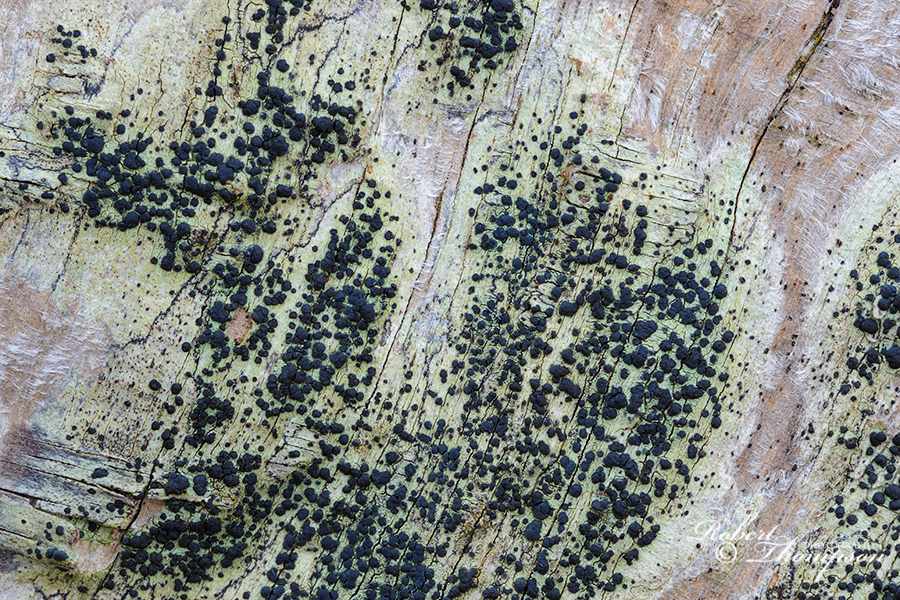
Lecidella elaeochroma f. elaeochroma
Do not neglect old established fence posts. They can be quite productive especially those found on old heath and moorland sites.
To be honest, the majority of photographers do not set out specifically to photograph lichens, but encounter some of the brightly coloured species by chance. Identification is often problematic with many species requiring more detailed analysis by a trained lichenologist. The lack of suitable publications was a major drawback in the past. As nature photographers, we like to be able to put names to our subjects. However times have changed, and there are a number of publications and websites now, which are devoted to the study of lichens and include photography to assist in the identification of many commonly encountered species.
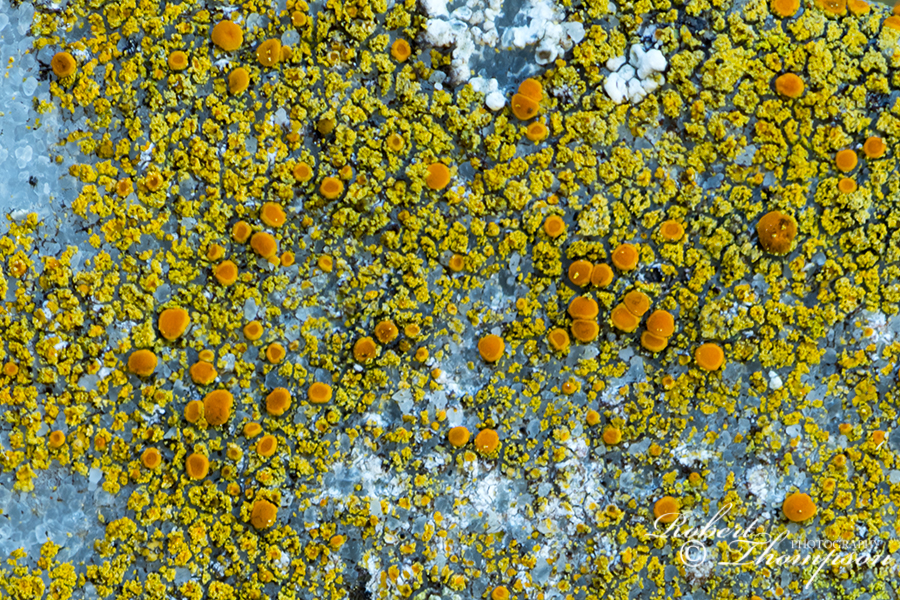
Caloplaca dichroa
I found this small attractive species growing on an old crumbling gravestone. The magnifications was beyond 1:1. I attached a 1.7mm teleconverter to increase the magnification which produced a very acceptable result with little loss in detail.
Lichen photography is an excellent way of keeping your hand in throughout the winter and early spring before the floral explosion kicks in. Why not give it a shot?

